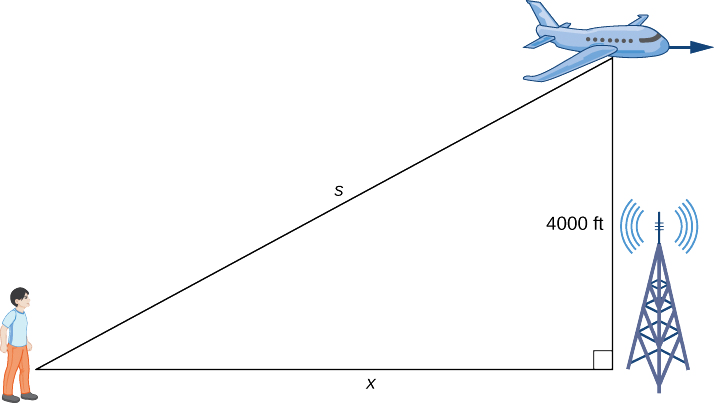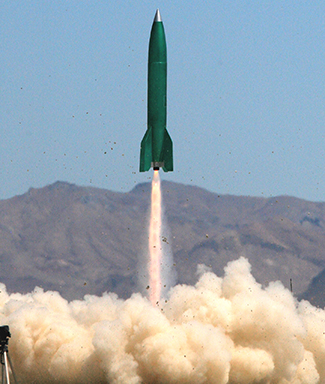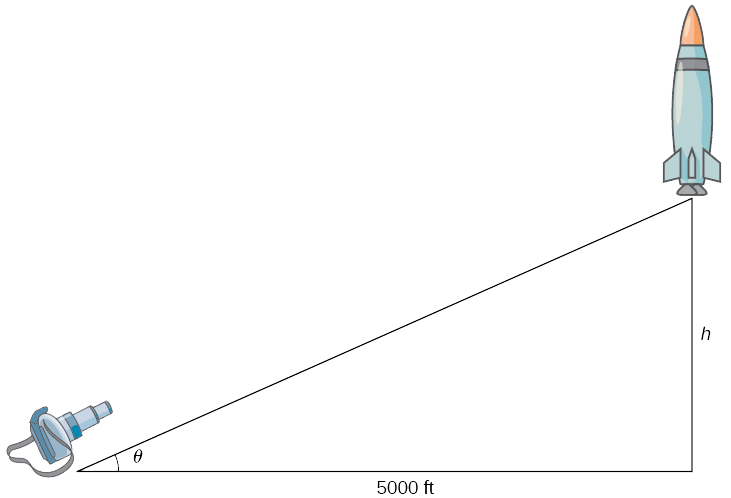3.9: Related Rates
- Page ID
- 116585
This page is a draft and is under active development.
\( \newcommand{\vecs}[1]{\overset { \scriptstyle \rightharpoonup} {\mathbf{#1}} } \)
\( \newcommand{\vecd}[1]{\overset{-\!-\!\rightharpoonup}{\vphantom{a}\smash {#1}}} \)
\( \newcommand{\id}{\mathrm{id}}\) \( \newcommand{\Span}{\mathrm{span}}\)
( \newcommand{\kernel}{\mathrm{null}\,}\) \( \newcommand{\range}{\mathrm{range}\,}\)
\( \newcommand{\RealPart}{\mathrm{Re}}\) \( \newcommand{\ImaginaryPart}{\mathrm{Im}}\)
\( \newcommand{\Argument}{\mathrm{Arg}}\) \( \newcommand{\norm}[1]{\| #1 \|}\)
\( \newcommand{\inner}[2]{\langle #1, #2 \rangle}\)
\( \newcommand{\Span}{\mathrm{span}}\)
\( \newcommand{\id}{\mathrm{id}}\)
\( \newcommand{\Span}{\mathrm{span}}\)
\( \newcommand{\kernel}{\mathrm{null}\,}\)
\( \newcommand{\range}{\mathrm{range}\,}\)
\( \newcommand{\RealPart}{\mathrm{Re}}\)
\( \newcommand{\ImaginaryPart}{\mathrm{Im}}\)
\( \newcommand{\Argument}{\mathrm{Arg}}\)
\( \newcommand{\norm}[1]{\| #1 \|}\)
\( \newcommand{\inner}[2]{\langle #1, #2 \rangle}\)
\( \newcommand{\Span}{\mathrm{span}}\) \( \newcommand{\AA}{\unicode[.8,0]{x212B}}\)
\( \newcommand{\vectorA}[1]{\vec{#1}} % arrow\)
\( \newcommand{\vectorAt}[1]{\vec{\text{#1}}} % arrow\)
\( \newcommand{\vectorB}[1]{\overset { \scriptstyle \rightharpoonup} {\mathbf{#1}} } \)
\( \newcommand{\vectorC}[1]{\textbf{#1}} \)
\( \newcommand{\vectorD}[1]{\overrightarrow{#1}} \)
\( \newcommand{\vectorDt}[1]{\overrightarrow{\text{#1}}} \)
\( \newcommand{\vectE}[1]{\overset{-\!-\!\rightharpoonup}{\vphantom{a}\smash{\mathbf {#1}}}} \)
\( \newcommand{\vecs}[1]{\overset { \scriptstyle \rightharpoonup} {\mathbf{#1}} } \)
\( \newcommand{\vecd}[1]{\overset{-\!-\!\rightharpoonup}{\vphantom{a}\smash {#1}}} \)
- Express changing quantities in terms of derivatives.
- Find relationships among the derivatives in a given problem.
- Use the Chain Rule to find the rate of change of one quantity that depends on the rate of change of other quantities.
- Apply the modified version of Polya's Problem Solving Strategy to solve related rate problems.
We have seen that for quantities that are changing over time, the rates at which these quantities change are given by derivatives. If two related quantities are changing over time, the rates at which the quantities change are related. For example, if a balloon is being filled with air, both the radius of the balloon and the volume of the balloon are increasing. In this section, we consider several problems in which two or more related quantities are changing and we study how to determine the relationship between the rates of change of these quantities.
Setting up Related-Rates Problems
In many real-world applications, related quantities are changing with respect to time. For example, if we consider the balloon example again, we can say that the rate of change in the volume, \(V\), is related to the rate of change in the radius, \(r\). In this case, we say that \(\frac{dV}{dt}\) and \(\frac{dr}{dt}\) are related rates because \(V\) is related to \(r\). Here we study several examples of related quantities that are changing with respect to time and we look at how to calculate one rate of change given another rate of change.
A spherical balloon is being filled with air at the constant rate of \(2\,\text{cm}^3\text{/sec}\) (Figure \(\PageIndex{1}\)). How fast is the radius increasing when the radius is \(3\) cm?

Solution
The volume of a sphere of radius \(r\) centimeters is
\[V=\frac{4}{3} \pi r^3\,\text{cm}^3.\nonumber\]
Since the balloon is being filled with air, both the volume and the radius are functions of time. Therefore, \(t\) seconds after beginning to fill the balloon with air, the volume of air in the balloon is
\[V(t)=\frac{4}{3} \pi \big[r(t)\big]^3\text{cm}^3.\nonumber\]
Differentiating both sides of this equation with respect to time and applying the Chain Rule, we see that the rate of change in the volume is related to the rate of change in the radius by the equation
\[V^{\prime}(t)=4 \pi \big[r(t)\big]^2 r^{\prime}(t).\nonumber\]
The balloon is being filled with air at the constant rate of \(2 \,\text{cm}^3\text{/sec}\), so \(V^{\prime}(t)=2\,\text{cm}^3\text{/sec}\). Therefore,
\[2\,\text{cm}^3\text{/sec}=\Big(4 \pi \big[r(t)\big]^2\;\text{cm}^2\Big) \cdot \Big(r^{\prime}(t)\;\text{cm/s}\Big),\nonumber \]
which implies
\[r^{\prime}(t)=\dfrac{1}{2 \pi \big[r(t)\big]^2}\;\text{cm/sec}.\nonumber\]
When the radius \(r=3\) cm,
\[r^{\prime}(t)=\dfrac{1}{18 \pi }\;\text{cm/sec}.\nonumber\]
What is the instantaneous rate of change of the radius when \(r=6\) cm?
- Hint
-
\(\frac{dr}{dt}=\frac{1}{2 \pi r^2}\)
- Answer
-
\(\frac{1}{72 \pi }\) cm/sec, or approximately 0.0044 cm/sec
While memorizing procedures is the absolute worst way to enjoy mathematics, applications (also known as "word problems") tend to confound students so much that it is beneficial to develop a procedure for solving. Let’s outline a modified problem-solving strategy developed by Polya.
In 1945 George Polya published the book How To Solve It which quickly became his most prized publication. It sold over one million copies and has been translated into 17 languages. In this book he identifies basic principles of problem solving. I have modified these problem-solving strategies to best fit calculus (we will see these again in a section titled, Optimization Problems).
- Read the given problem.
- Understand the given problem. This might require you to rephrase the problem in terms that you can understand or, more commonly, to draw a picture of the situation.
- Label unknowns. All problems presented in mathematics have unknown quantities. In this step, you take the time to label these unknowns using variables. This step is often combined with the previous step (especially when drawing pictures).
- List the Givens and Wants. This step is dedicated to making a table with one column dedicated to given information and another column dedicated to the wanted or desired information. Normally, we only list the given and desired rates in this table.
- Create a Master Equation involving the variables within the given and wanted rate information. This is a critical step in all problem-solving processes involving Polya's method.
Warning: The Master Equation should be a relation between two variables (those listed in the Givens and Wants table). If your Master Equation has more than two variables, you need to find a relation between the excess variables to reduce the number of final variables in your Master Equation to two. - Find the Rate Equation from the Master Equation. This almost always requires implicit differentiation.
- Substitute in any constants given within the problem.
- Solve the resulting equation for the desired "wanted" piece of information.
Note that when solving a related-rates problem, it is crucial not to substitute known values too soon. For example, if the value for a changing quantity is substituted into an equation before both sides of the equation are differentiated, then that quantity will behave as a constant and its derivative will not appear in the new equation found during the rate equation step. We examine this potential error in the following example.
Examples of Polya's Problem-Solving Process
Let’s now implement the strategy just described to solve several related-rates problems. The first example involves a plane flying overhead. The relationship we are studying is between the speed of the plane and the rate at which the distance between the plane and a person on the ground is changing.
An airplane is flying overhead at a constant elevation of \(4000\) ft. A man is viewing the plane from a position \(3000\) ft from the base of a radio tower. The airplane is flying horizontally away from the man. If the plane is flying at the rate of \(600\) ft/sec, at what rate is the distance between the man and the plane increasing when the plane passes over the radio tower?
Solution
Read. This step is only listed so you can have a "win." All of us can read a problem, but understanding requires a bit more effort.
Understand and Label. Draw a picture, introducing variables to represent the different quantities involved.

As shown, \(x\) denotes the distance between the man and the position on the ground directly below the airplane. The variable \(s\) denotes the distance between the man and the plane. Note that both \(x\) and \(s\) are functions of time. We do not introduce a variable for the height of the plane because it remains at a constant elevation of \(4000\) ft. Since an object’s height above the ground is measured as the shortest distance between the object and the ground, the line segment of length 4000 ft is perpendicular to the line segment of length \(x\) feet, creating a right triangle.
Givens and Wants.
| Given | Want |
|---|---|
| \(\dfrac{dx}{dt} = 600\) feet per second | \(\dfrac{ds}{dt}\left|_{x = 3000}\right.\) |
Since \(x\) denotes the horizontal distance between the man and the point on the ground below the plane, \(dx/dt\) represents the speed of the plane. We are told the speed of the plane is \(600\) ft/sec. Therefore, \(\frac{dx}{dt}=600\) ft/sec. Since we are asked to find the rate of change in the distance between the man and the plane when the plane is directly above the radio tower, we need to find \(ds/dt\) when \(x=3000\) ft.
As was mentioned in Polya's modified problem-solving process, we only list the given and desired rate information. That is, don't bother listing the facts that the height of the plane is always \(4000\) feet and the distance from the tower to our position is always \(3000\) feet.
Master Equation. The variables within our table above are \(x\) and \(s\). From the figure, we can use the Pythagorean Theorem to write an equation relating these two variables:
\([x(t)]^2+4000^2=[s(t)]^2.\)
Rate Equation. Differentiating this equation with respect to time and using the fact that the derivative of a constant is zero, we arrive at the equation
\[x\frac{dx}{dt}=s\frac{ds}{dt}.\nonumber \]
Substitute. When we "stop time" to do the problem, we know that \(\frac{dx}{dt}=600\) ft/sec and \(x=3000\) ft. Thus,
\[ (3000)(600) = s \frac{ds}{dt}. \nonumber \]
Solve. You can see that the only thing we are missing is \(s\). However, we can use the Pythagorean Theorem to determine the distance \(s\) when \(x=3000\) ft and the height is \(4000\) ft. Solving the equation
\(3000^2+4000^2=s^2\)
for \(s\), we have \(s=5000\) ft at the time of interest. Using these values, we conclude that \(ds/dt\)
is a solution of the equation
\((3000)(600)=(5000) \cdot \dfrac{ds}{dt}\).
Therefore,
\(\dfrac{ds}{dt}=\dfrac{3000 \cdot 600}{5000}=360\,\text{ft/sec}.\)
Note: When solving related-rates problems, it is important not to substitute values for the variables too soon. For example, in the Master Equation step, we related the variable quantities \(x(t)\) and \(s(t)\) by the equation
\([x(t)]^2+4000^2=[s(t)]^2.\)
Since the plane remains at a constant height, it is not necessary to introduce a variable for the height, and we are allowed to use the constant 4000 to denote that quantity. However, the other two quantities are changing. If we mistakenly substituted \(x(t)=3000\) into the equation before differentiating, our equation would have been
\(3000^2+4000^2=[s(t)]^2.\)
After differentiating, our equation would become
\(0=s(t)\dfrac{ds}{dt}.\)
As a result, we would incorrectly conclude that \(\frac{ds}{dt}=0.\)
What is the speed of the plane if the distance between the person and the plane is increasing at the rate of \(300\) ft/sec?
- Hint
-
\(\dfrac{ds}{dt}=300\) ft/sec
- Answer
-
\(500\) ft/sec
We now return to the problem involving the rocket launch from the beginning of the chapter.
A rocket is launched so that it rises vertically. A camera is positioned \(5000\) ft from the launch pad. When the rocket is \(1000\) ft above the launch pad, its velocity is \(600\) ft/sec.

Find the necessary rate of change of the camera’s angle as a function of time so that it stays focused on the rocket.
Solution
Read. Again, this is a freebie step. Make sure you read the problem thoroughly!
Understand and Label. Draw a picture introducing the variables.

Let \(h\) denote the height of the rocket above the launch pad and \( \theta \) be the angle between the camera lens and the ground.
Givens and Wants. We are trying to find the rate of change in the angle of the camera with respect to time when the rocket is 1000 ft off the ground. That is, we need to find \(\frac{d \theta }{dt}\) when \(h=1000\) ft. At that time, we know the velocity of the rocket is \(\frac{dh}{dt}=600\) ft/sec.
| Given | Want |
|---|---|
| \( \dfrac{dh}{dt}\left|_{h = 1000}\right. = 600\) feet per second | \(\dfrac{d \theta}{dt}\left|_{h = 1000} \right. \) |
Master Equation. Using the fact that we have drawn a right triangle, it is natural to think about trigonometric functions. Recall that \(\tan{(\theta)}\) is the ratio of the length of the opposite side of the triangle to the length of the adjacent side. Thus, we have
\(\tan{(\theta)} = \dfrac{h}{5000}\).
This gives us the equation
\(h=5000\tan{(\theta)}.\)
Rate Equation. Differentiating this equation with respect to time \(t\), we obtain
\(\dfrac{dh}{dt} = 5000\sec^2{(\theta)} \dfrac{d\theta}{dt}\).
Substitute. Letting \(h = 1000\) and \(\dfrac{dh}{dt} = 600\), we get
\[ 600 = 5000 \sec^2{(\theta)} \dfrac{d\theta}{dt}. \nonumber \]
Solve. We want to find \(\frac{d\theta}{dt}\) when \(h=1000\) ft. We need to determine \(\sec^2{(\theta)}\). Recall that \(\sec{(\theta)}\) is the ratio of the length of the hypotenuse to the length of the adjacent side. We know the length of the adjacent side is \(5000\) ft. To determine the length of the hypotenuse, we use the Pythagorean Theorem, where the length of one leg is \(5000\) ft, the length of the other leg is \(h=1000\) ft, and the length of the hypotenuse is \(c\) feet as shown in the following figure.

We see that
\(1000^2+5000^2=c^2\)
and we conclude that the hypotenuse is
\(c=1000\sqrt{26}\,\text{ft}.\)
Therefore, when \(h=1000,\) we have
\(\sec^2{(\theta)} = \left(\dfrac{1000\sqrt{26}}{5000}\right)^2=\dfrac{26}{25}.\)
Doing a final substitution into our formula from the Substitute step, we arrive at
\(600=5000\left(\frac{26}{25}\right)\dfrac{d\theta}{dt}\).
Therefore, \(\dfrac{d \theta }{dt}=\dfrac{3}{26}\) rad/sec.
What rate of change is necessary for the elevation angle of the camera if the camera is placed on the ground at a distance of \(4000\) ft from the launch pad and the velocity of the rocket is \(500\) ft/sec when the rocket is \(2000\) ft off the ground?
- Hint
-
Find \(\frac{d \theta }{dt}\) when \(h=2000\) ft. At that time, \(\frac{dh}{dt}=500\) ft/sec.
- Answer
-
\(\frac{1}{10}\) rad/sec
In the next example, we consider water draining from a cone-shaped funnel. We compare the rate at which the level of water in the cone is decreasing with the rate at which the volume of water is decreasing.
Water is draining from the bottom of a cone-shaped funnel at the rate of \(0.03\,\text{ft}^3\text{/sec}\). The height of the funnel is \(2\) ft and the radius at the top of the funnel is \(1\) ft. At what rate is the height of the water in the funnel changing when the height of the water is \(\frac{1}{2}\) ft?
Solution
This time, we will shorthand our steps to mirror the pacing you should get used to.
Read. Done.
Understand and Label. See the picture below.

Let \(h\) denote the height of the water in the funnel, \(r\) denote the radius of the water at its surface, and \(V\) denote the volume of the water.
Givens and Wants.
| Given | Want |
|---|---|
| \( \dfrac{dV}{dt} = -0.03 \text{ ft}^3\text{/sec}\) | \( \dfrac{dh}{dt}\left|_{h = 1/2} \right. \) |
Master Equation.
\(V=\frac{1}{3} \pi r^2h.\)
Since the Master Equation involves more than two variables, we want to find a relation to rewrite \(r\) in terms of either \(h\) or \(V\).
From the figure, we see that we have similar triangles. Therefore, the ratio of the sides in the two triangles is the same. Therefore, \(\frac{r}{h}=\frac{1}{2}\) or \(r=\frac{h}{2}.\) Using this fact, the equation for volume can be simplified to
\(V=\frac{1}{3} \pi \left(\frac{h}{2}\right)^2h=\frac{ \pi }{12}h^3\).
Rate Equation.
\[\frac{dV}{dt}=\frac{\pi}{4}h^2\frac{dh}{dt}.\nonumber \]
Substitute.
\[−0.03 = \frac{\pi}{4}\cdot \left(\frac{1}{2}\right)^2 \cdot \dfrac{dh}{dt},\nonumber \]
Solve. The previous step implies
\[−0.03=\frac{\pi}{16}\dfrac{dh}{dt}.\nonumber \]
It follows that
\[\dfrac{dh}{dt}=−\frac{0.48}{\pi} \approx −0.153\,\text{ft/sec}.\nonumber \]
At what rate is the height of the water changing when the height of the water is \(\frac{1}{4}\) ft?
- Hint
-
We need to find \(\frac{dh}{dt}\) when \(h=\frac{1}{4}.\)
- Answer
-
\(−0.61\) ft/sec
Key Concepts
- To solve a related rates problem, first draw a picture that illustrates the relationship between the two or more related quantities that are changing with respect to time.
- In terms of the quantities, state the information given and the rate to be found.
- Find an equation relating the quantities.
- Use differentiation, applying the Chain Rule as necessary, to find an equation that relates the rates.
- Be sure not to substitute a variable quantity for one of the variables until after finding an equation relating the rates.
Glossary
- related rates
- are rates of change associated with two or more related quantities that are changing over time


